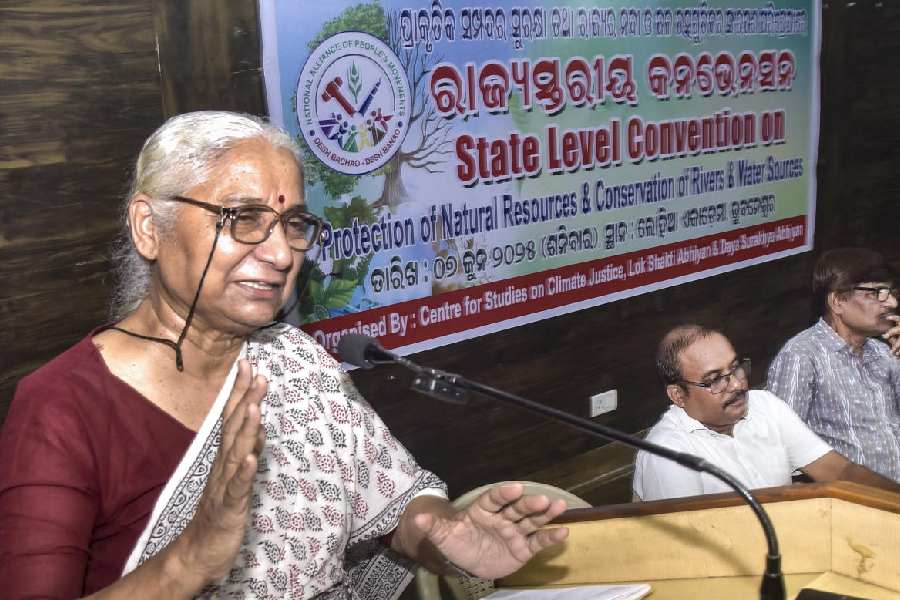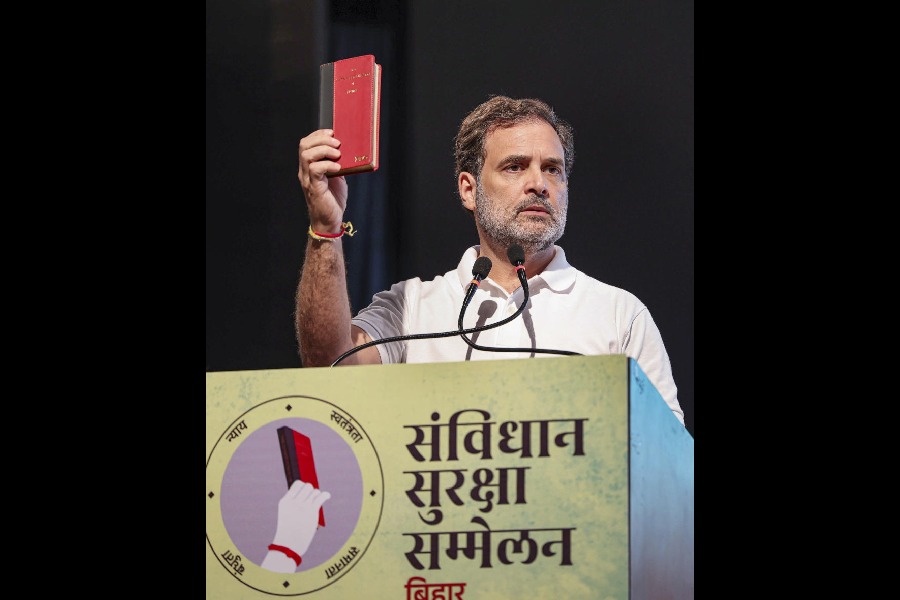 |
In the week following the launch of The World Is What It Is, his defining biography of Vidia Naipaul, Patrick French has had a fever, moved house, had his car towed away, been asked to write a blog for the first time and even faced the ire of pro-Tibet supporters.
He looks remarkably relaxed despite this, even when his publicist shows him the mountain of books he has to sign that day. Having finished the 499-page tome on Naipaul — an effort that took “nerves of iron” — French can probably deal with anything.
We meet at the London office of Picador, a stone’s throw from the seedy backstreets of Kings Cross, once famous for the prostitutes that used to walk the kerbs. The area is now gentrified, boasting the gleaming Eurostar terminal with the longest champagne bar in the world and the daily trippers zipping across to the continent on high-speed trains clutching their lattes and laptops. Till recently, these were the sort of streets that French’s subject, Naipaul, loved to visit as he tried to discover the fragile underbelly of the world’s civilisations and capture them in his books. It was always the slums that fascinated Naipaul in Bombay, not the skyscrapers.
For his biography, Naipaul handpicked French. He had met the author a couple of times before and been interviewed by him at the Cheltenham Literature festival after winning the Nobel Prize for Literature. Something about the boyish French, who had retraced Gandhi’s Dandi Salt March at the age of 30 for his book Liberty or Death and written the award-winning biography Younghusband about the great imperial explorer who had visited Tibet, appealed to Naipaul. If his biography had to be written — and it was clear that this would soon be the case — he would like to entrust it to French.
“I was completing Tibet, Tibet when I was approached to write Naipaul’s biography,” said French. “At that time I thought, this man is trouble, I don’t want to write about him.” He then mulled over it and sent Naipaul a list of demands, including unrestricted rights to access and use material from Naipaul’s papers, including his wife Pat’s diary (which Naipaul had never read) which were kept in the University of Tulsa in Oklahoma and closed to the public.
There was initial hesitation and silence from Naipaul, and then the clearance. It began the five-year-long process which took French to Trinidad, India, Africa, USA, Pakistan and Argentina. He pored through the 50,000 pages lodged in the Tulsa archives and interviewed Naipaul 24 times. Naipaul, true to his words, did not seek to conceal anything. He even told French in an emotional moment, that his cruelty had probably killed his wife Pat. Typically, Naipaul has not read French’s biography though he was given a manuscript.
The book, with its revelations about Naipaul’s dark side — his visits to prostitutes, his cruelty to his long-suffering wife Pat who died of cancer and his Argentinean mistress, Margaret, has let loose a flurry of articles on Naipaul, some of which have angered French. “I know quite a bit of this is shocking, especially because of the brutally frank way in which he spoke, but I did not expect the press response. I didn’t anticipate that instead of reading the book, they would just read the reports on the extracts and make a pop-psychological deduction which is not borne out by the contents of the book,” said French. “When they talk about him visiting prostitutes, it is as if no man has ever been to a prostitute. They are not reading the book and seeing that it is a tragedy arising out of a physically failed marriage.”
As a biographer, French, who confesses that he admires “some” of Naipaul’s works, felt he had to bring the real man to the people and believed quite strongly that he was “not diminished” by the book. “Whatever he (Naipaul) is, he is not a hypocrite, not a person who builds himself as a cute guy,” said French. He said it was obvious to him that Naipaul applied the same exacting standards on himself as he did with others. “He is not interested in the condemnation of the press. The most important thing he cares about is his writing. I think he knew that I would treat his book with great seriousness, which is why he chose me.”
French is glad he did. Apart from the challenge of writing the biography of one of this century’s most controversial writers, the 42-year-old author met his future wife, Meru Gokhale, in India during his research. Thirteen years younger than him, Meru, daughter of Namita Gokhale, was working as an editor in Penguin India. The couple got married last year and Meru moved to London, where she now heads the Penguin India office. Last summer, Patrick introduced his young wife to Naipaul, delighting the elderly writer.
Since the publication of the book, French has been in what he describes in an “odd, amorphous state”. He has not been silent however, and written about his first passion, Tibet. French was drawn to Tibet ever since he met the Dalai Lama at the age of 16. It led to the publication of Younghusband, the book which took him to Tibet for the first time and the beginning of a strong bond with the people and their struggle.
Watching the recent protests in Lhasa which left 100 dead, French wrote an article in The New York Times titled “He May Be God But He Is No Politician” criticising the role played by the Tibetans in exile and stating that the Dalai Lama was badly advised on Tibet. French wrote that the Dalai Lama should have closed down the Hollywood strategy a decade ago and started back-channel diplomacy with Beijing. The article provoked howls of indignation, as the world watched the flawed progress of the Olympic torch and the protests and demonstrations in its wake. French, however, stuck his ground.
“I have been told by Tibetans in Lhasa that the protests outside make the protesters feel good, but it makes the condition of the Tibetans worse. It only makes China exercise more control and oppression on the Tibetans,” said French. While writing Tibet, Tibet he had stayed in nomads’ tents, spoken to Tibetan nuns who had faced torture and joined the anti-Communist movement and written first-hand about their condition. As former director of the Free Tibet Campaign in London, he had tried to raise awareness about the plight of Tibetans, but felt now that the international movement had not had any impact and was essentially flawed.
“I think China will never change, it is too powerful economically, and the West will never do anything about it,” he said. “That is the harsh truth, unfortunately. The world is what it is,” he said, repeating the title of his biography of Naipaul.
“It’s becoming my philosophy, isn’t it,” he laughed. “But that is how it is. It’s an unfair world.” Naipaul smiles at us rakishly, cigarette in hand, from the covers of the hundreds of books piled on the table. He seemed to be agreeing.
French starts a five-city book tour of India in May. He revealed that of all the countries that he travelled to research Naipaul, Indians were the most critical of the Noble laureate. Will they see beyond the persona and focus on the books, he wonders. But then, would Naipaul care either way?










